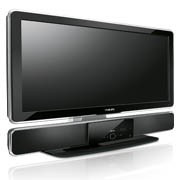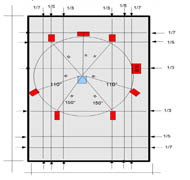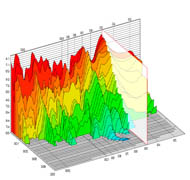How To Choose A Home - Theatre Or Sound System As Per Your Requirements
Hear properly before you buy (or call us).
Home theatre amplifier should have at least 70dB S/N ratio and higher, wattage should be in RMS continuous (matters).
Size of room is a great concern for system output.
Compatibility with the equipments at present or if replacing all the old equipments, then better plan for future in terms of multiple connection options(gaming consoles, computer, i-pod, Blu-ray player, USB drives etc.). Do you play music in your own room from the main system, check out for speaker A & B option in the new system.
At least 2HDMI inputs are needed & 1HDMI output for home theatre/receiver unit & 2HDMI inputs & 1output for HDTV/projector.
Types of speakers floor standing, wall mounting, wireless & sound bar.
Floor Standing
speakers require floor space, avoid if you have small children or pets at home, these are good in aesthetic appeal. Chances of getting moved from aligned position disturbing imaging.
Wall Mount
speakers for less space, good alignment as these can be locked in position, one time solution of wiring & alignment.
Wireless speakers are for those who don’t have option of wiring through wall & under floor/carpet, definitely comes at a premium.
Sound Bar
 is a single unit with least wiring, difficult to align as imaging is hard to point out at listening position.
If looking for HDTV then do check 1080p as the standard & future compatibility. 1080i is also HD but 1080p is progressive means better for fast movements i.e sports, action, etc
is a single unit with least wiring, difficult to align as imaging is hard to point out at listening position.
If looking for HDTV then do check 1080p as the standard & future compatibility. 1080i is also HD but 1080p is progressive means better for fast movements i.e sports, action, etc
According to room size, seating positions and basic décor with respect to listening positions etc. size of the speaker system as power depends on how loud you can/would like to hear continuously without disturbing your neighbours or inmates of the house including your pets. Big size doesn’t always suit every need and also big speakers. Every system speaker has tendency of staying silent(inertia) until a certain amount of power i.e. If you buy a big speaker system it needs a lot of power to rock itself & by the time you rock you are already been asked by your neighbour to reduce the volume which disturbs them, neither you enjoy nor your neighbours. Hence in most of the cases smaller speakers are enough for good size home. A good system needs a good installation and definitely proper acoustics.
Every high end or medium end system is designed according to a free space/anechoic room and which are void of reflections & diffusions etc, from the surfaces near which they are kept, the same has to be done in the place where it is installed at customer end. Reflection of sound from different surfaces such as floors, decors, walls, glass windows or glass laminated items have different effects usually changing tone that is colouration and also distorting the actual sound by introducing reflection called as reverberation/echo. Any recording/mixing can only faithfully reproduced only when we have minimal reverberation.
Alignment
 Every standard recording whether 2 channel stereo or 6 channel surround sound has particularly angles and heights of listening. Mostly the front speakers at an angle of 45 to 60 degrees from the listener, where as the rear speakers are twice the angle i.e. 120 to 135 degrees and 2 to 4 feet above the ear level. Centre speakers are mostly above or below the screen. Alignment is technically applicable for the internal speaker design too, very big front and very small rear speaker doesn’t match & in the same visa-versa hence each component has to be matched / aligned in highs (tweeters), mids (squeakers’), lows (woofers) are also to be balanced for correct and faithful reproduction. Alignment is done according to hit & trial as each space/site has its own pros & cons and challenges even from a slight change in décor/ furnishing to the size of room or the listening position etc. A front speaker if aligned for wider angle will make for a broader sweet spot but, will severely destroy the imaging at different angles of listening. Alignment also includes delay adjustment of different speakers to make the sound arrive at the same time to the listener.
Every standard recording whether 2 channel stereo or 6 channel surround sound has particularly angles and heights of listening. Mostly the front speakers at an angle of 45 to 60 degrees from the listener, where as the rear speakers are twice the angle i.e. 120 to 135 degrees and 2 to 4 feet above the ear level. Centre speakers are mostly above or below the screen. Alignment is technically applicable for the internal speaker design too, very big front and very small rear speaker doesn’t match & in the same visa-versa hence each component has to be matched / aligned in highs (tweeters), mids (squeakers’), lows (woofers) are also to be balanced for correct and faithful reproduction. Alignment is done according to hit & trial as each space/site has its own pros & cons and challenges even from a slight change in décor/ furnishing to the size of room or the listening position etc. A front speaker if aligned for wider angle will make for a broader sweet spot but, will severely destroy the imaging at different angles of listening. Alignment also includes delay adjustment of different speakers to make the sound arrive at the same time to the listener.
Distance to the listener for proper imaging sound from each speaker must arrive at the listening position at precisely the same moment. Speaker should be equidistant from the listener for this phenomenon to happen. A trained ear can make out a difference of even 1cm between the speakers in stereo systems.
Distance to the side wall & back wall- there are two acoustic characters here bass and the sound stage i.e. image. Closer the speaker is to a boundary (wall, floor, ceiling) the more bass reinforcement. Changing the placement in relation to these surfaces can dramatically improve the system. The speakers excite room modes which create low frequency standing waves, because of their long wavelengths these waves are omnipresent, and adjusting the listening position can determine whether that point is with relation to areas of additive or subtractive bass pressure. Sound image is influenced by rear wall proximity, increasing distance between the wall and the speaker increase the sound stage depth, however pulling the speaker too far out may degrade focus. Another factor is the distance from side wall, it affects both the sound staging & tonal balance. Side wall will more influence midrange while rear wall will impact bass.
Distance between the speakers will be determined by the distance to your listening position, the particular speaker you own & personal preference. Some manufacturers recommend a specific measure for speaker separation, using these measures depends on availability of space, also any such recommendation is just the beginning. Increasing the distance between the speakers will widen the sound stage (until, at some point the centre image falls apart), decreasing the width will narrow the stage and increase centre focus. Proximity of one speaker to the other will influence tonal quality as well.
Toe-in, tilt & listening height are some collective measures to be taken by listening for a proper soundstage with tonal balance, which can also be achieved with manufacturers’ ideal measures too.
Calibration
 It’s the procedure for setting up the system after alignment for the ideal listening positions. Calibration is the recreation of studio situations where the program originated or mixed so as to reveal the true intension of the sound engineer as per the international standards. According to the video & speaker system installation a sweet spot is chosen & the whole system is calibrated accordingly. Sound levels from different speakers are programmed into the receiver or processor as per standards. Sweet spot can be a single position or multiple positions for wide imaging depending on the system starting from 1 position to 8-32 positions and this is done with trained ears & specific tools.
It’s the procedure for setting up the system after alignment for the ideal listening positions. Calibration is the recreation of studio situations where the program originated or mixed so as to reveal the true intension of the sound engineer as per the international standards. According to the video & speaker system installation a sweet spot is chosen & the whole system is calibrated accordingly. Sound levels from different speakers are programmed into the receiver or processor as per standards. Sweet spot can be a single position or multiple positions for wide imaging depending on the system starting from 1 position to 8-32 positions and this is done with trained ears & specific tools.
Some important factors to over come in power supply section for noise free performance and less maintenance.
Blackout - Sustained lack of A/C line voltage.
Brownout - Sustained period of low A/C line voltage.
Fluctuation - A surge, sag or brownout condition.
Line Noise (EMI/RFI) - Electro-magnetic Interference and Radio Frequency Interference. Can be caused by a variety of sources including: static electricity, household appliances, radio stations or other broadcast facilities, military or civilian radar, faulty electrical fixtures and power transformers.
Sag - A low voltage condition of short duration.
Spike - Instantaneous over voltage condition superimposed on the A/C line. Large scale spikes from a thunderstorm, smaller spikes generally result from appliances.
Surge - Sustained period of over-voltage.
Line Conditioners - A general term referring to any device designed to decrease A/C line related problems.
UPS - Uninterruptible Power Supply uses batteries to provide backup power in the event of a blackout, or provide stable voltage during a brownout or fluctuation if the unit also features voltage regulation.
Voltage Regulator - A device designed to stabilize line voltage. Many different types exist, some are more accurate than others.


